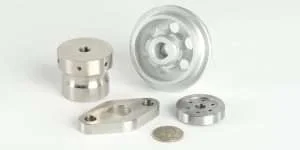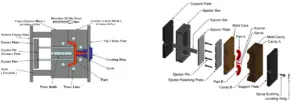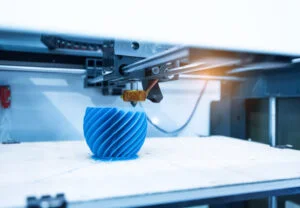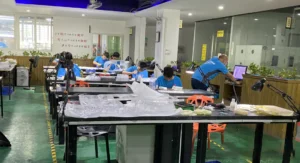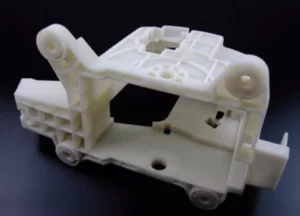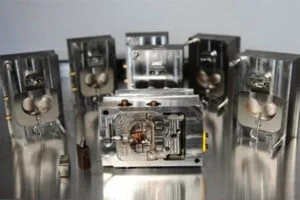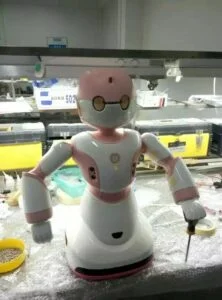Aluminum is a widely used nonferrous metal suitable for prototype production as well as manufacturing durable materials needed in a wide range of industries, including aerospace, construction, and transportation.
Aluminum prototypes play a vital role in the manufacturing industry by providing a cost-effective means of design validation, product development, and market evaluation.

Key Properties of Aluminum Suitable for Prototyping
Aluminum prototypes possesses vital properties that make it a suitable choice for prototype production. They are as follows:
Excellent Functional Performance
Although the metal prototype approach affects the functional performance of the aluminum prototype, these prototypes have highly functional or mechanical effects. This is because aluminum is very machinable. However, a strong, high-quality aluminum alloy is needed for a working prototype.
High Heat Resistance
Extrusion d'aluminium is an excellent thermal conductor as it dissipates heat efficiently. Unlike plastic prototypes, this property makes it a suitable alternative in heat sinks for electronic devices and the construction of radiators.
Cost-effectiveness
Building an Aluminum prototypes is more cost-effective than creating a mold for large-scale production. The physical properties of aluminum allow for rapid iteration and modification, which brings about a reduction in production costs.
Aesthetic Appeal
With CNC machining or 3D printing technology, aluminum prototypes are aesthetically pleasing objects, which take the silvery-white appearance of the parent metal, aluminum. This is especially useful in the manufacture of outdoor parts and jewelry.
Accuracy
Aluminum is easy to machine and such feature makes it an ideal choice for the manufacture of machine parts. Good machinability and improved quality of aluminum prototypes alloys amount to less deformation of parts during the cutting process.
For instance, in fabricating a piston compressor with a measurement of 1.3 inches in height and with a tolerance of +/- 0.007 inches. Aluminum creates piston compressors within the height range of 1.295 and 1.307 inches when used. The tight tolerance values allow for products of high quality.
Excellent Strength
Compared to metals like steel, aluminum prototypes has a substantially higher strength-to-weight ratio. This characteristic is appropriate for strong and lightweight structure design, which has several benefits for moving structures like ships, automobiles, and airplanes.
Common Aluminum Alloys for Making Prototypes
In understanding how to create a prototype, knowledge of the different aluminum alloys is essential. However, some are more outsourced because of their unique properties for specific applications. Some of the common aluminum alloys used for making prototypes include:

Aluminum 7075
Aluminum 7075 is known for its high strength-to-weight ratio. These attributes make it suitable for designing lightweight structures without compromising on durability and safety. It is used in the manufacturing of aircraft components.
Also, aluminum prototypes 7075 is highly machinable, enabling manufacturers to easily produce intricate shapes, such as complex aircraft components. Overall, the production process is quick and cost-effective.
Aluminum 5052
Aluminum 5052 is another common aluminum alloy known for its corrosion resistance, strength, water resistance, and good weldability. These attributes make it suitable for making parts that will be exposed to moisture for extended periods, like boat and ship parts.
Aluminum 6061
Aluminum 6061 has low density, which makes it lightweight. It consists of copper, silicon, magnesium, and chromium. This aluminum alloy is also highly resistant to chemical corrosion, making it suitable for marine equipment, outdoor furniture, and electronic parts.
Aluminum 6063
Popularly known as architectural aluminum, Aluminum 6063 is highly corrosion-resistant, making it an ideal material for use in harsh environments. Aluminum 6063 consists of copper, magnesium, and silicon, making it suitable for making architectural components.
Aluminum 6082
Aluminum 6082 has good corrosion resistance. Therefore, it is often used in marine environments. This alloy can even be used for extended periods in saltwater, which is more corrosive than ordinary water.
Different Machining Techniques for Creating Aluminum Prototypes
Making an aluminum prototype involves different aluminum prototype machining techniques. The common machining techniques include:

Usinage CNC
The CNC machining prototype is a computerized manufacturing process that involves the use of computer software to control the movement and direction of factory machines and tools during production. CNC machining controls complex machines such as Laser cutters, mills, routers, and lathes which are used to cut, shape, and create symmetrical parts.
Unlike traditional machines which are controlled manually using steers, levers, and hand wheels, the Computer Numerical Control (CNC) machine is fully automated. The pre-programmed software or code (G-code) tells the machine how to function accurately by providing it with specific measurements (speed, location) and dimensions during production.
Advantages
- It can be used to make prototypes with intricate designs;
- Since it is computer-controlled, the results are made with accuracy and a high level of precision;
- Adjustments can be easily made to the designs between prototypes without changing the time lead.
Disadvantages
- CNC aluminum machining provides accuracy, but it is more expensive to operate and maintain than traditional manufacturing machines;
- It has limited use for mass production.

Aluminum Casting
This process involves the consolidation of pressure, speed, and time using machine, mold, and alloy elements. From prototype to production, this technique works by surging the liquid aluminum into a mold, which takes the shape of the desired prototype.
Advantages
- It produces a very strong and durable part;
- It reduces material wastage.
Disadvantages
- This process is time-consuming;
- It is expensive to operate as it requires special tools to function.
Extrusion d'aluminium
Aluminum prototypes extrusion is a common technique whereby an aluminum alloy material is forced through a die or an open mold with a cross-sectional profile. This versatility means that aluminum extrusion can be used to create a variety of products, such as tubes, metal bars, automobile frames, and so on.
Advantages
- They are excellent thermal conductors suitable for optimizing heat dissipation in housing components;
- It requires low-material usage;
- Since materials can be recycled, their wastage of material is minimal.
Disadvantages
- It is only ideal for the production of elongated components;
- Using this technique is time-consuming.

Fabrication de tôles
Like the CNC machining technique, sheet metal fabrication consists of various methods, such as cutting, deformation, and pinching. These processes are used to shape and construct metal parts into the desired metal forms.
Aluminum prototypes, copper, and steel are the metals usually used in this technique. The process involves converting single sheets of metal into products using the methods mentioned above.
The use of sheet metal fabrication is prevalent in the production of appliances, computers, and medical equipment.
Advantages
- It produces durable parts for prototyping;
- It requires low-material usage.
Disadvantages
- It is not suitable for complex designs;
- The machine is expensive.
Considerations to Choose the Right Process for Aluminum Prototyping
Choosing the right process for aluminum prototypes is essential in the manufacturing world as this would increase the production process and reduce the wastage of materials. In selecting the proper technique, the following should be taken into consideration.
Material Quality
The type of aluminum alloy to be used in the manufacturing process determines the type of technique and the quality of the prototype. When searching for suitable material, it is essential to carry out your research on the properties of aluminum alloy and also seek the help of CNC prototype manufacturers for professional advice.
Speed
Different prototyping techniques have different speeds. When performing rapid iterations, techniques like 3D printing and CNC machining can produce results faster than older techniques like casting.

Complexity
The prototype details and complexity of the material are determinants in choosing a process for aluminum prototyping. Some processes are suited to complex designs and intricate geometries, while others are suitable for simpler designs. When making complex prototypes, Usinage CNC, and 3D printing are highly recommended.
Quantity
The process you choose will depend on how many aluminum prototypes you need. While processes like die casting may be more advantageous for larger quantities, CNC machining, and 3D printing may be more appropriate for smaller quantities.
Coût
Cost is one key factor in choosing the most suitable technique, encompassing various factors such as labor, material, capital, and time consumption. While die casting has been proven to be a suitable method for large-scale production of aluminum rapid prototypes, other techniques may require expert opinion for further details.
Applications of Aluminum Prototypes
Aluminium is the most common material used in the creation of prototypes, and manufacturers in various sectors largely recommend it. Below are some sectors where the application of aluminum prototypes is dominant.

Automobile
Aluminum is a material that automobile parts manufacturers use to produce engine radiators, and wheels, which are lightweight and suitable for the environment.
Medical
The delicacy of this sector requires materials that are biocompatible and have high resistance to corrosion. Hence, CNC aluminum machining is the perfect material that is used in the production of surgical instruments, implants, and prostheses, among other medical devices.
Aircraft Sector
Most aerospace structures and components including landing gears, engine parts, fuselage components, and fasteners are made from aluminum due to its strong properties and lightweight.
Industrie de l'énergie
The lightweight, strength, durability, and corrosion resistance make aluminum suitable for building renewable energy platforms like solar panels and wind turbines.
Electronic Products
Aluminum casings, heatsinks, capacitor foils, and other parts that aid in heat dissipation and safeguard delicate electronics are produced using CNC machining.
Get High-Quality Aluminum Prototypes at XinCheng
When it comes to getting aluminum prototypes, XinCheng Machining is your reliable manufacturer. We are committed to offering precision and excellent prototyping services, including CNC machining, vacuum casting, fabrication de tôles, and die casting. Whether you require prototypes for aerospace, automotive, electronics, or any other industry, XinCheng can provide high-quality products to meet your specific requirements. We also pay close attention to the delivery and quality. And we guarantee to finish the projects on time.
Conclusion
Over time, the aluminum prototype has proven to be significant in product testing. Aluminum’s excellent machinability, aesthetics, and strength make it suitable for prototyping. Several aluminum alloys and methods create prototypes of varying properties and applications. Various challenges must also be considered, like selecting the right aluminum alloy and prototyping techniques.
FAQ
What are the most common processes used in aluminum CNC prototypes?
CNC milling machines are the most common process of machining aluminum parts as the machine uses cutting tools to cut material with precision from blocks of material.
What is the cost of producing aluminum prototypes?
There is no definite cost for producing aluminum prototypes as the cost depends on certain factors, such as the type of aluminum alloy used.
What is the best alloy used in making a prototype?
When it comes to making a rapid production run, aluminum 6061 is the best alloy.

